Here are some plants in the biotope in late autumn. Some trees and plants are looking different from usual, perhaps due to this summer's extreme heat, while others have produced their distinctive autumnal berries.
Trees looking different from usual
Japanese maple
For the past several years, the maple leaves have been late in changing color.
Previously, November was the best time to see autumn leaves. However, this year, many leaves had still not yet changed color when November arrived.
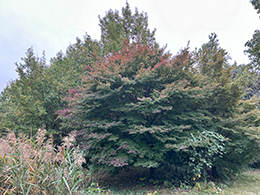
Japanese Zelkova
The leaves usually turn yellow or red and then fall off. However, in the past few years, many leaves have turned brown and fallen without turning red or yellow first.
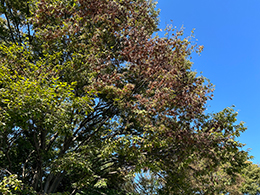
Japanese Aucuba
These are usually evergreen trees with bright green leaves. However this year, many of these trees withered and their leaves turned black, likely due to the extreme temperatures this summer.
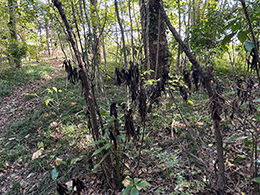
Plants with pretty berries
Vigna angularis var. nipponensis
These are said to be the wild ancestors of today's cultivated azuki beans. These pods are black and the beans (seeds) of this plant are smaller than azuki beans. The plant produced yellow flowers this summer. Later, in autumn, it produced pods full of beans, which are edible.
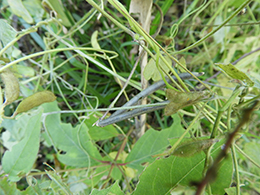
Pods and seeds of Vigna angularis var. nipponensis
(You can see that the seeds are very small - battery included for scale.)
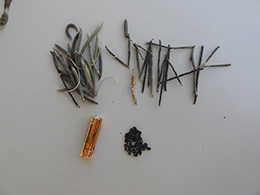
Ampelopsis glandulosa var. heterophylla
These plants survived this summer's extreme heat and produced many small, light purple and blue berries. Although they belong to the grape family, they are inedible.
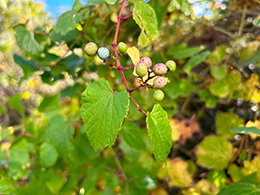
Big blue lilyturf
After the blooming of purple flowers in summer, the lilyturf plants produced green berries, and gradually the color of the berries turned indigo. These plants tolerate summer heat well.
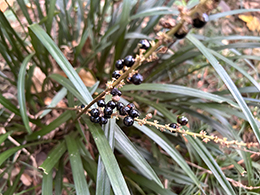
The videos of the Advantest biotope can be viewed via the "Biotope Quarterly Archive".